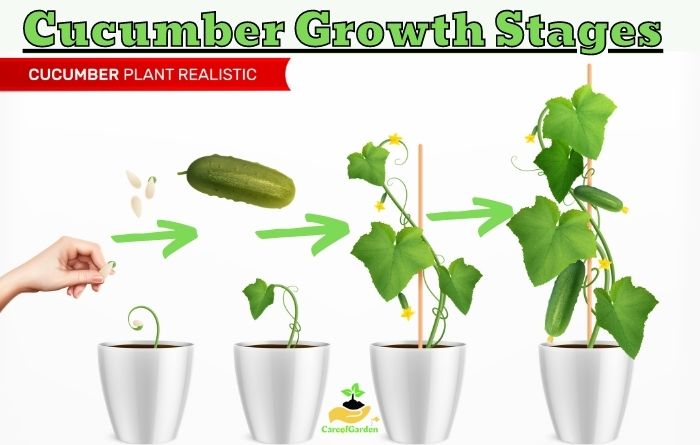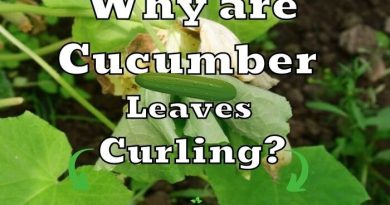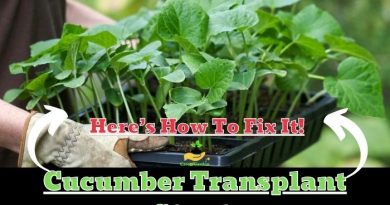Cucumber Growth Stages: A Step-by-Step Guide with Pictures!
Have you ever thought about how a popular vegetable like cucumber grows from tiny seeds into the plump, juicy vegetables we love to eat? If you’re eager to grow your own, it’s crucial to understand the various stages of cucumber growth.
This comprehensive article explores each stage of cucumber growth, from seed to harvest, offering insights into optimal conditions, care practices, and common challenges. Let’s dive in and learn how to grow thriving cucumber plants!
| Cucumber Growing Stage | Description | Duration |
|---|---|---|
| Stage1: Germination | The first stage of cucumber growth, where the seed begins to sprout and grow roots. | 7-10 days |
| Stage2: Seedling Growth | The second stage of cucumber growth, where the plant develops its first true leaves. | 2-3 weeks |
| Stage3: Vegetative Growth | The third stage of cucumber growth, where the plant focuses on developing foliage and stems. | 3-4 weeks |
| Stage4: Flowering | The fourth stage of cucumber growth, where the plant begins to produce flowers. | 1-2 weeks |
| Stage5: Fruit Development | The fifth and final stage of cucumber growth, where the plant focuses on producing and ripening fruit. | 5-6 weeks |
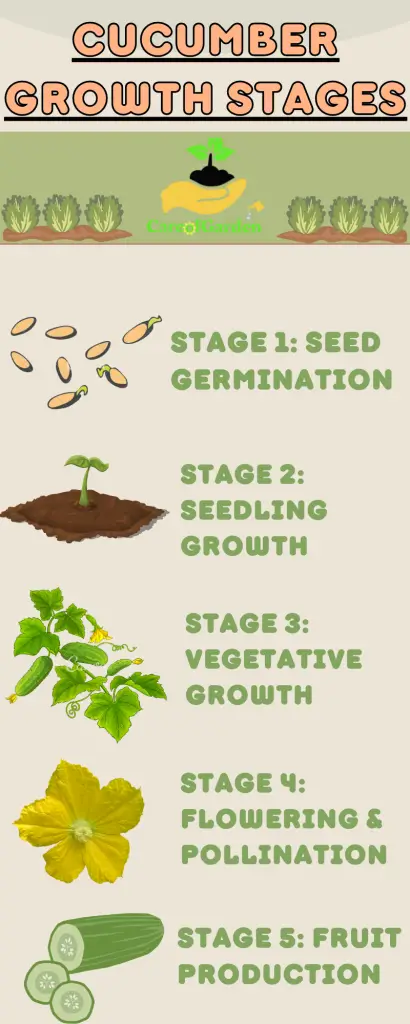
Stage 1: Cucumber Seed Germination (7-10 Days)
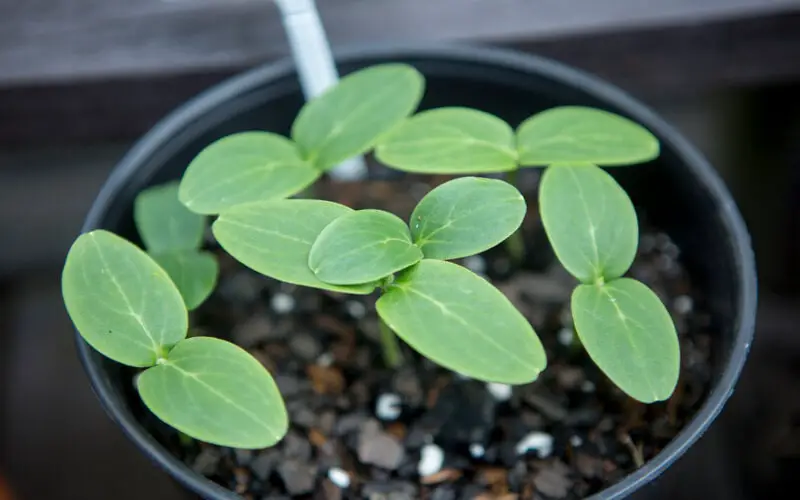
The first step in a cucumber plant’s growth stage is germination. Germination is the process by which a seed sprouts and develops into a new plant. In the case of cucumbers, germination refers to the initial stage of growth when the cucumber seed absorbs water, swells, and begins to break open, allowing the embryonic plant to emerge.
Let’s dive into the world of cucumber seed germination and discover how to help them thrive.
Imagine tiny cucumber seeds nestled in the soil, ready to awaken and grow. For this to happen, they need just the right environment. One important factor is keeping the soil warm, ideally between 70 and 95°F (21 to 35°C).
This warmth acts like a gentle nudge, coaxing the seeds to come to life and start their journey. To give our seeds the best chance, it’s a good idea to start the germination process indoors or in a greenhouse. This protects them from unpredictable weather and provides a controlled setting.
Once the danger of frost has passed and the weather is favorable, we can safely move the young seedlings outside to continue their growth.
Now, let’s talk about the optimal conditions for water. During germination, it’s important to keep the soil moist but not overly wet. This allows the seeds to absorb the water they need to sprout without drowning them. Finding the right balance is key to their success.
Plant the seeds about one inch deep in well-draining soil and keep them in a warm and well-lit area.
Germination usually occurs within 7 to 10 days, depending on the cucumber variety. Thin out the seedlings once they have developed their first true leaves to provide ample space for growth.
| Seed Germination Requirements | Details |
|---|---|
| Temperature | Optimal range: 75°F (24°C) to 85°F (29°C). Germination can occur at lower temperatures, but it may be slower and less successful. |
| Soil Moisture | Keep the soil evenly moist but not waterlogged. Plant cucumber seeds in well-draining soil that retains moisture without becoming saturated. |
| Planting Depth | Plant cucumber seeds at a depth of approximately 1 inch (2.5 cm) in the soil. |
| Light | While cucumber seeds don’t require light for germination, provide bright light (12-16 hours of direct sunlight or grow lights) after the seedlings emerge. |
| Humidity | Maintain high humidity levels during germination. Consider covering the planted area with clear plastic or using a humidity dome. |
| Air Circulation | Ensure good air circulation to prevent damping-off disease. Avoid overcrowding the seeds and provide proper ventilation around the seedlings. |
| Seed Quality | Use fresh, viable cucumber seeds from a reputable source for better germination rates. |
Stage 2: Seedling Growth (2-3 Weeks)
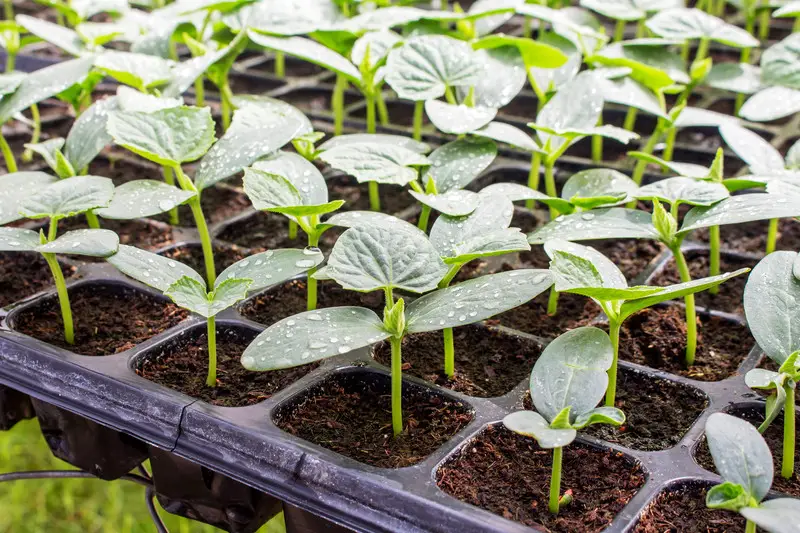
Now the seedling growth stage has arrived. It’s a time when the tender cucumber seedlings sprout and begin their journey towards becoming strong, productive vines.
The seedling stage is a crucial phase in the growth of cucumber plants. It follows the germination stage and involves the development of young cucumber plants from the emerged seedlings until they reach a more mature stage. During this stage, the cucumber seedlings establish their root system, develop their true leaves, and begin active growth.
Understanding the development of cucumber seedlings and implementing key care practices during this stage is essential.
As the seedlings emerge from the soil, delicate and full of potential, they require special attention and care. One of the most critical factors is providing them with adequate moisture.
Keep the soil consistently moist, but be careful not to overwater. Aim for a balance, ensuring that the soil is damp but not waterlogged. This will help the seedlings establish a healthy root system and encourage steady growth.
Light plays a vital role in the development of cucumber seedlings. They thrive in bright, indirect sunlight. Place them in a location that receives ample natural light or provide them with fluorescent grow lights if growing indoors.
Regularly rotate the seedlings to ensure they receive even light exposure from all sides, preventing them from leaning towards a single light source.
Temperature is another important aspect to consider. Cucumber seedlings prefer a warm environment, ideally between 70 and 80°F (21 to 27°C).
Avoid exposing them to cold drafts or extreme temperature fluctuations, as it can stunt their growth or cause damage. Maintaining a consistent and comfortable temperature will help the seedlings flourish.
To support the cucumber seedlings development, it’s crucial to provide proper nutrition. Start fertilizing the seedlings with a balanced, water-soluble fertilizer when they develop their first true leaves.
Follow the instructions on the fertilizer package to ensure the correct dosage. This will provide the essential nutrients the seedlings need to grow strong and healthy.
During the seedling stage, it’s important to monitor growth and address any signs of stress or pest infestation promptly.
Inspect the leaves regularly for discoloration, wilting, or signs of pests. If any issues arise, take appropriate action, such as adjusting watering practices or using organic pest control methods, to protect the seedlings.
Stage 3: Cucumber Vegetative Growth (3-4 Weeks)
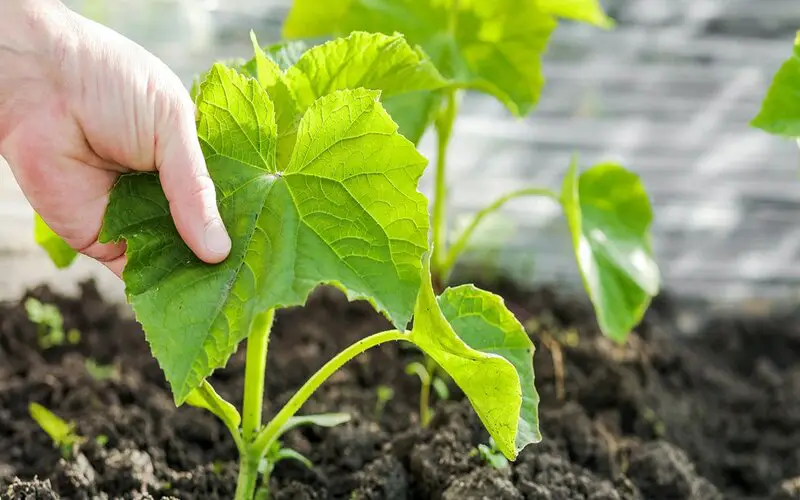
Now comes the vegetative growth stage which is an exciting time in the life of cucumber plants. It’s a period of rapid growth and expansion, where your plants will flourish with abundant leaf production and vigorous vine development.
The vegetative growth stage of cucumbers refers to the period when the plant primarily focuses on producing leaves, stems, and establishing a strong and healthy framework before transitioning into reproductive growth. During this stage, cucumber plants focus on developing a robust vegetative structure to support future flowering and fruiting.
As cucumber plants enter the vegetative growth stage, their primary focus is on foliage development. Lush, green leaves become the hallmark of healthy cucumber plants.
To support this growth, it’s important to provide them with ample sunlight. Cucumber plants thrive in full sunlight, so choose a location in your garden that receives at least six to eight hours of direct sunlight per day.
During this stage, regular watering is crucial to ensure the plants remain hydrated and vibrant. Keep the soil consistently moist, but avoid overwatering, which can lead to root rot or other problems.
Mulching around the plants can help retain moisture and regulate soil temperature, promoting optimal growth conditions.
Cucumber plants have a natural tendency to spread and climb, so providing adequate support is essential. Install trellises, stakes, or other structures to support the growing vines.
This not only helps prevent the plants from sprawling on the ground but also improves air circulation and reduces the risk of disease.
Pruning is another important aspect of managing cucumber plants during the vegetative growth stage. Remove any yellowing or diseased leaves promptly to maintain plant health.
Additionally, consider pruning excessive side shoots to encourage vertical growth and channel the plant’s energy toward leaf production and fruit development.
During this stage, cucumber plants are heavy feeders, requiring regular fertilization. Apply a balanced, slow-release fertilizer according to the package instructions. This will provide the essential nutrients necessary for vigorous growth and lush foliage.
As the vegetative growth stage progresses, you’ll witness the remarkable expansion of cucumber plants. Vines will grow longer, and new leaves will emerge, creating a dense and vibrant canopy. With each passing day, the plants become stronger and more resilient.
Stage 4: Cucumber Flowering & Pollination (1-2 Weeks)

The flowering stage is a pivotal phase in the life of cucumber plants, as it marks the beginning of their journey towards bountiful fruit production.
The flowering stage of cucumbers refers to the period when the plant develops and produces flowers, which are essential for pollination and subsequent fruit set.
During this stage, the plant transitions from vegetative growth to reproductive growth, producing flowers that will eventually develop into cucumbers. The flowering stage marks the beginning of the fruiting process. Understanding the significance of cucumber blossoms and their role in fruit production is key to ensuring a successful harvest.
Cucumber blossoms are not just a visual delight; they play a crucial role in the reproductive process.
The blossoms contain both male and female reproductive organs, making them perfect flowers. The male flowers produce pollen, while the female flowers bear the potential for fruit development.
The intricate dance between these blossoms is vital for successful pollination and fruit set. Bees and other pollinators are the unsung heroes during the flowering stage. They are responsible for transferring pollen from the male flowers to the female flowers, enabling fertilization to take place.
To attract these beneficial insects, it’s essential to provide a garden environment that welcomes pollinators. Planting native flowers, avoiding the use of harmful pesticides, and maintaining a diverse and blooming garden will help ensure a healthy population of pollinators.
During the flowering stage, it’s crucial to monitor the health of the cucumber blossoms. Look for signs of pests or diseases and take appropriate measures to protect the flowers.
Additionally, adequate watering is essential to support flower development and prevent stress that could hinder fruit production. Keep the soil consistently moist but avoid overwatering, which can lead to fungal issues.
While cucumber plants produce both male and female flowers, the female flowers hold the promise of future cucumbers. You can identify female flowers by the small fruit, known as an ovary, located at the base of the blossom.
Once pollination occurs, the ovary will develop into a cucumber. It’s important to note that not all flowers will set fruit, and some may drop naturally. This is a normal part of the process, so don’t be alarmed if not every blossom leads to a cucumber.
To ensure a higher chance of successful fruit production, you can assist the pollination process manually.
Gently transfer pollen from the male flowers to the center of the female flowers using a small brush or cotton swab. This can help increase the likelihood of fruit set, particularly in situations where pollinator activity may be limited.
Stage 5: Cucumber Fruit Production (5-6 Weeks)
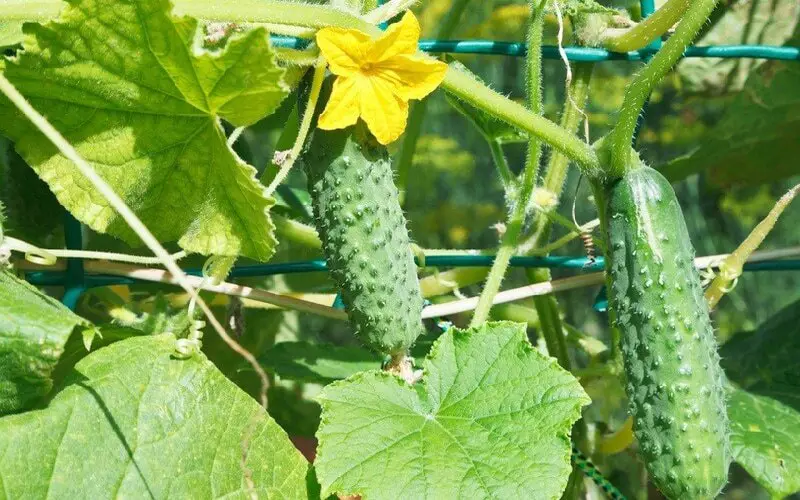
The fruit development stage is a captivating phase in the life of cucumber plants, as the tiny cucumbers begin their journey towards becoming plump, succulent fruits.
The fruiting stage of cucumbers is the phase in the plant’s life cycle when the flowers have been successfully pollinated, and the fruits begin to develop and mature. This stage is characterized by the growth and ripening of the cucumbers, leading to the harvest of fully mature fruits.
Understanding the maturation process of cucumber fruits and the factors that influence their growth is essential for cultivating a successful harvest.
As the cucumber fruits start to develop, it’s important to provide them with optimal growing conditions. Adequate sunlight is crucial for fruit development, as it promotes photosynthesis and contributes to the production of sugars, flavors, and nutrients.
Ensure that your cucumber plants receive at least six to eight hours of direct sunlight each day.
Watering plays a significant role in supporting the growth of cucumber fruits. Keep the soil consistently moist, providing a regular supply of water to the plants. Irregular watering can lead to uneven growth, misshapen fruits, or bitterness.
Mulching around the plants can help retain moisture and regulate soil temperature, creating a favorable environment for fruit development.
Proper spacing is essential to allow enough room for the cucumber fruits to grow. Ensure that each plant has enough space to spread its vines and allow air circulation, which helps prevent diseases and promotes healthy fruit growth.
During the fruit development stage, fertilization plays a crucial role in supporting the cucumber’s nutrient needs. Applying a balanced fertilizer according to the recommended dosage can provide the essential nutrients necessary for robust fruit growth.
Follow the instructions on the fertilizer package and avoid over-fertilization, as it can negatively impact fruit quality.
Temperature is a key factor influencing the growth and maturation of cucumber fruits. Cucumbers thrive in warm conditions, with optimal temperatures ranging between 70 and 90°F (21 to 32°C).
Extreme heat or cold can affect fruit development and quality. Consistent temperatures throughout the day and night contribute to steady growth and desirable fruit characteristics.
Protect cucumbers during fruit development. Inspect regularly for pests and diseases. Take action promptly. Harvest at peak flavor. Different cucumber varieties have varying maturation times, so monitor the fruits closely. Harvesting too early or too late can result in inferior taste and texture.
How long does it take to grow a cucumber?
The time it takes to grow a cucumber can vary depending on various factors, including the cucumber variety, growing conditions, and cultural practices. Cucumbers are harvested at various stages of development, snipping the fruit off rather than ripping it off. On average, it takes approximately 55 to 70 days from the time of seed sowing to harvest cucumbers for most common cucumber varieties.
| Cucumber Variety | Days to Maturity |
|---|---|
| Burpless Beauty | 55-65 days |
| Marketmore 76 | 60-70 days |
| Straight Eight | 55-65 days |
| Lemon Cucumber | 55-65 days |
| Armenian Cucumber | 55-65 days |
| Pickling Cucumber | 50-60 days |
| English (or European) Cucumber | 55-70 days |
| Japanese Climbing Cucumber | 60-70 days |
| Persian Cucumber | 55-65 days |
| Bush Champion | 55-60 days |
When Is Cucumber Growing Season?
The cucumber growing season is usually 3-4 months and typically depends on the climate and the specific variety of cucumber being grown. For proper germination, the soil temperature must be at least 15 degrees. The optimal temperature for growing is around 20-22 during the day and 19-20 at night, but cucumber grows in hot conditions. In general, the cucumber growing season starts in late spring or early summer and lasts until early fall.
Here are some guidelines for the cucumber growing season:
- Spring: Cucumbers are usually planted after the last frost has passed and the soil has warmed up. This is typically in early to mid-spring, depending on your location. Cucumber plants require soil temperatures of around 60°F (15°C) for proper growth.
- Summer: Cucumbers grow best in warm weather. They require consistent moisture and heat to develop properly. In summer, cucumbers thrive and produce fruit abundantly. Regular watering is important during this time, especially during hot spells.
- Fall: Cucumbers can also be grown in the fall season in areas with mild climates. Planting cucumbers in late summer for a fall harvest can be successful, as long as the plants have enough time to mature before the first frost arrives. Some cucumber varieties are bred specifically for fall planting.
Table with Cucumber Growth Requirements
| Cucumber Growth Requirement | Description |
|---|---|
| Sunlight | Full sun (6-8 hours per day) |
| Temperature | Warm temperatures between 70-85°F (21-29°C) |
| Soil Type | Well-draining, fertile soil |
| pH Level | Slightly acidic to neutral (pH 6.0-7.0) |
| Watering | Consistent watering, keeping soil moist but not saturated |
| Fertilizer | Balanced organic or slow-release fertilizer |
| Spacing | Planting spacing of 18-36 inches (45-91 cm) |
| Trellis or Support | Provide a trellis or support for vertical growth |
| Pest Control | Regular inspection and treatment for pests |
| Pollination | Ensure access to pollinators or hand pollination |
| Harvesting | Regularly harvest mature cucumbers to promote continuous growth |
How long does it take a cucumber to grow once it starts?
On average, cucumbers typically take about 50 to 70 days from the time of pollination to harvest. However, this timeframe can be shorter for some smaller cucumber varieties, such as pickling cucumbers, and longer for larger slicing cucumbers.
I’ve found there are a few key factors that influence how quickly they grow once they start:
- The first is variety. Pickling cucumbers and smaller slicing types tend to mature faster than larger varieties. Most cucumbers will flower 5-7 weeks after seeds are sown though.
- Temperature also plays a role. Cucumbers grow best at 70°F or above. In warm soil, they’ll produce that first crop more quickly – around 50-70 days from seed, according to my experience.
- Once a flower appears, growth is fairly rapid under ideal conditions. I’ve found cucumbers generally take around 8-10 days to develop from flowering into a small, immature fruit ready for harvest.
- With consistent water, fertilizer, and pest management, these baby cucumbers will swell in size noticeably over the next couple of weeks. By 3 weeks post-flowering, they should reach full maturity.
So in summary, given a warm start and attentive care, I’ve noticed cucumbers can go from seedlings to first harvest-ready fruits in as little as 8 weeks in my garden. Proper growing methods really help maximize their speedy production.
How long does it take for a cucumber to grow after flowering?
Once a cucumber plant has started flowering, it usually takes about 8 to 12 days for the flowers to be pollinated and the fruit to begin forming.
In optimal conditions with warm soil temperatures around 70°F or higher, moisture from regular watering, and nutrients from fertilizer, these baby cucumbers can swell to a harvestable size within 10-14 days of the flowers opening.
Some faster-maturing varieties may be ready to pick in as little as 8 days post-flowering. Larger burpless or English cucumber varieties tend toward the longer end of the 2-3 week window to fully develop.
Conclusion
Witnessing the transformation of tiny cucumbers into plump, delicious fruits is a rewarding experience. Embrace the magic of fruit development in cucumbers, appreciating the efforts of nature and your own care.
As you savor the crisp, refreshing taste of homegrown cucumbers, you’ll know that your dedication and knowledge have contributed to their journey from tiny green orbs to delightful culinary delights.
Frequently Asked Questions
Cucumber plants typically start producing fruit around 45 to 55 days after planting, depending on the variety. Factors such as temperature, light, and proper care can affect the fruiting timeline.
During the vine development stage, it is beneficial to provide support for cucumber plants. You can use trellises, stakes, or cages to help the vines climb, promote air circulation, and prevent the fruits from touching the ground.
Cucumbers can be eaten at different stages of growth, but the taste, texture, and preferred culinary uses may vary depending on the cucumber’s maturity.
Cucumbers take time to grow due to their specific growth requirements and stages. They are warm-season vegetables that need consistent warm temperatures between 70°F (21°C) and 95°F (35°C) to thrive.The overall growth period can vary based on the cucumber variety and environmental conditions.
Resources used: Image by macrovector on Freepik

